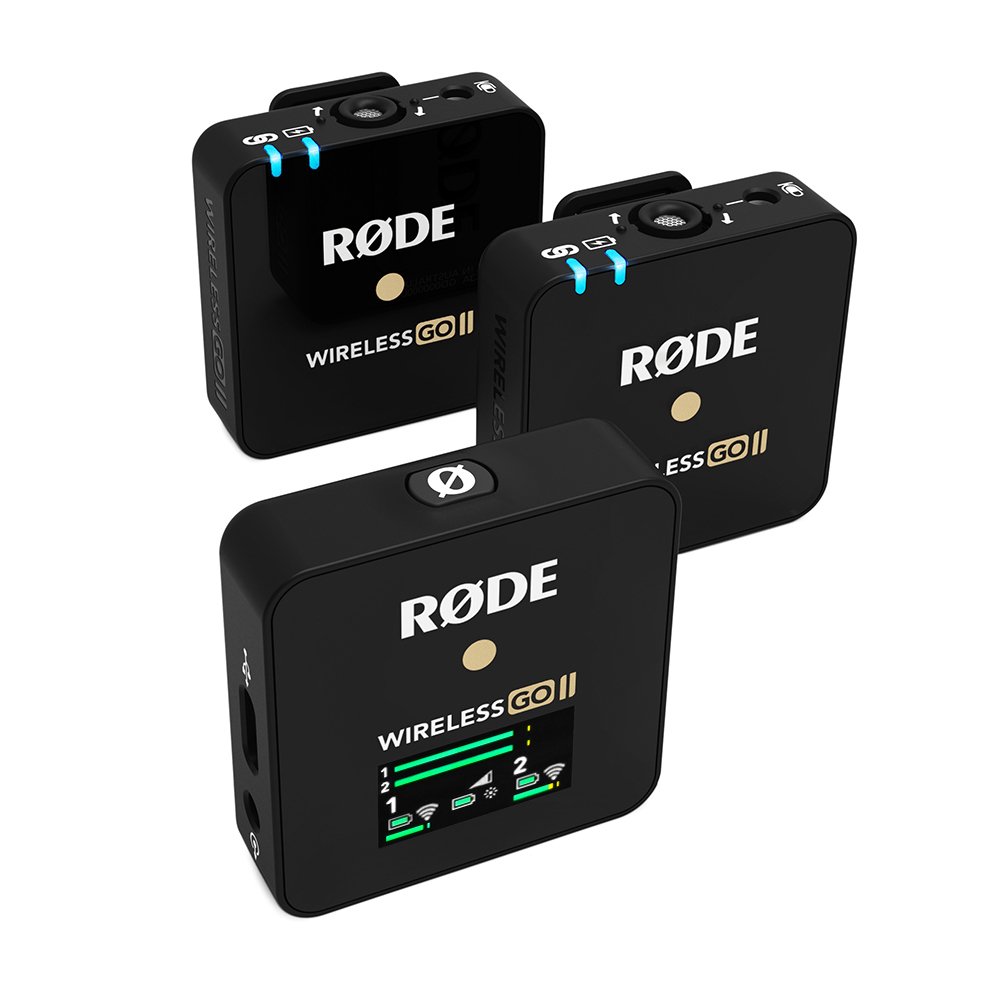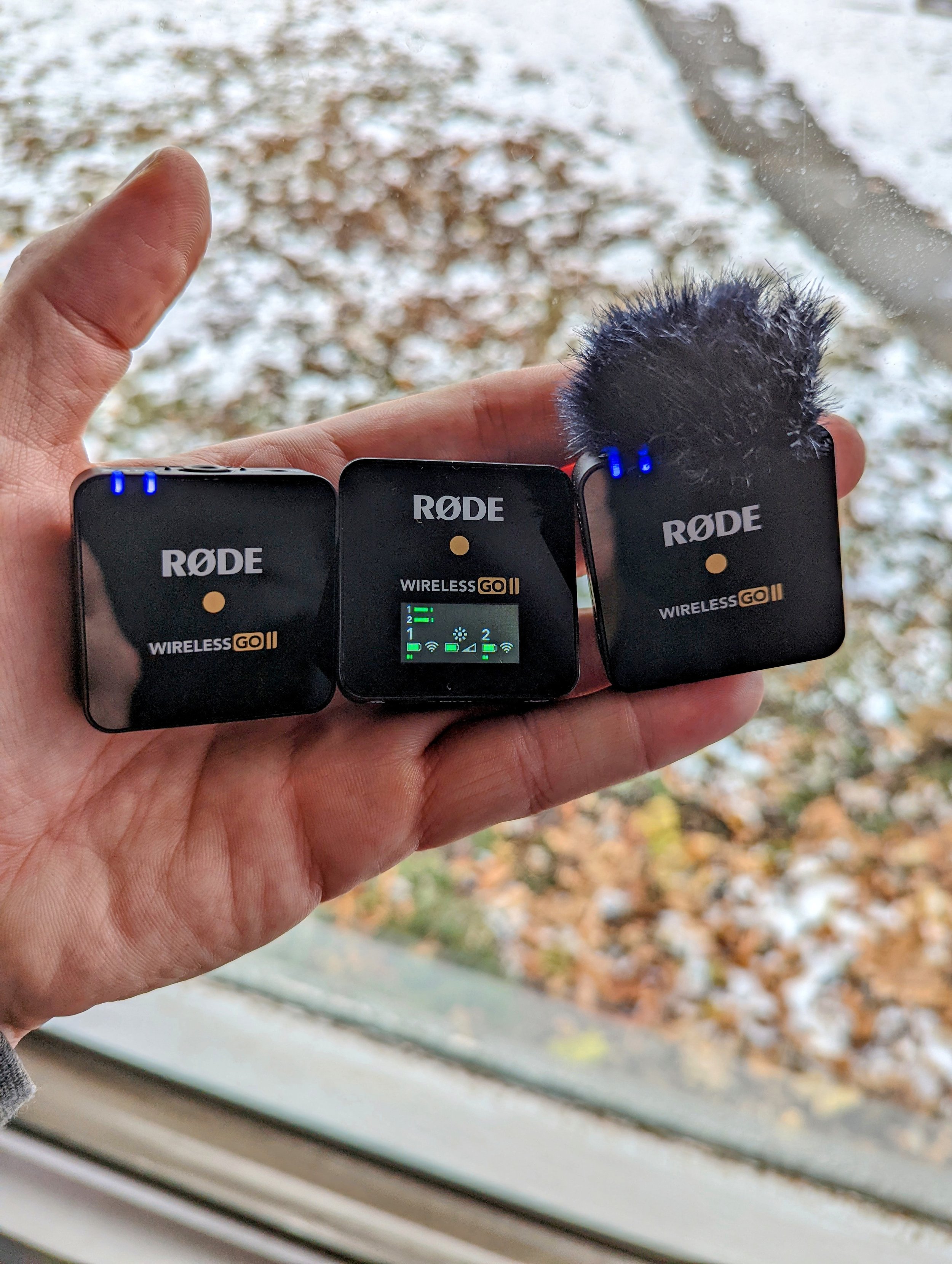Rode Wireless GO II REVIEW: Three Features That Make This Lav Kit A Must-Have
Big things continue to come in small packages
To Lav or Not to Lav?
During the filming of the original Star Wars (1977) , Mark Hamill asked whether his hair looking different from the previous camera setup would ruin the continuity of the scene. Harrsion Ford famously responded with, “hey kid, if the audience is looking at your hair, we’re all in big trouble.” I agree with this statement and oh, how us sound recordists wish the same logic could be applied to lavalier mics. Depending on the video content being produced, a visible lav mic can not only be noticeable but also completely take the audience out of the experience, unfortunately.
When recording audio for video, sound recordists gush over the setups that allow them to place a boom mic just above the subject’s head and juuust above the camera’s framing (the ideal audio setup). However, not every setup affords us that luxury and sometimes we have to turn to our lav kits to get the best audio. In some scenarios, a lav kit’s microphone or transmitter pack being visible is forgivable and at times, can add value to the aesthetic of the video. But when keeping those elements invisible to the viewer is a priority, that’s when mic placement can get a little tricky. When those situations arise, the Rode Wireless GO II Lav Kit is a great tool to have in your audio bag.
So Small Yet So Capable
The first thing that drew my eye to the Wireless GO II set was its incredibly small size. Our other lavalier kits had transmitters that were about the size of a deck of cards which can make it difficult to hide at times. The Wireless GO II transmitter packs are about the size of your average smartwatch face and are so light that your subject can wear it around their upper arms like a Fitbit. This makes for both easy hiding and wearing for your subject(s). The compact size also removes the need for external batteries as the transmitters and receiver come with a rechargeable internal battery, saving both space and money for your kit.
The sleek and ominous tech look to the devices also gives you the opportunity to be clever with hiding these kits out in the open. Recently, we were on a shoot where on one of our performers was dressed in workout attire and due to cramped quarters (filming in a car), we weren’t able to boom them for audio. Many contingencies were formulated and we ended up taping both transmitters to the underside of the car’s hatch, making them look like the pads you see on most car trunks. While speaking with the director about what to do if that contingency failed, I simply said, “they look like Fitbits, she’s in her workout gear so worst case scenario; we strap one to her arm.” Thankfully our first contingency worked as the arm strap would have likely caused continuity errors (we like to look out for our editing team like that).
Insane Range and a Failsafe to Boot
Another standout feature of the Wireless GO II is its incredible transmission range, which is listed at 200 meters with line of sight. I tested this range one day when walking my dog and that figure is pretty accurate. This type of range paired with ability to send signals from two transmitters to one receiver enables audio engineers to record multiple subjects at great distances.
However, almost every filming environment comes with elements that can block or cause interference with your lav kit’s communications: radios, thick walls, and other wireless transmissions (audio and video alike). Thankfully, the Wireless GO II has you covered in those situations. Not only do the transmitters have internal power but they also have internal memory that stores all of your recordings, downloadable via the unit’s USB-C input. This kind of backup system provides an amazing failsafe for when the worst happens to your wireless audio setup: a lost signal. In fact, this feature makes the use of an external recorder unnecessary (but highly recommended) for most applications.
The On-Board Mics Significantly Increase the Value
With a retail value of $299.99 at the time of this writing, a lavalier kit with two transmitters by an industry leader like Rode is already a great value, even with purchasing separate microphones to connect to the transmitter’s 3.5mm TRRS inputs. The value of this kit is even greater when you take the on-board microphones into account. In most situations, you’ll want to utilize a separate mic (especially when discretion is a priority) but the on-board mics can be very handy in certain environments and situations. We’ve already used these on-board mics as a primary, backup, and scratch audio source over several projects since purchasing them.
As it has consistently been our experience working with equipment made by Rode, the sound quality of these on-board microphones is fantastic. The compactibility and capability of this lav kit has me wondering what other ways I can utilize these mics moving forward. Maybe I can leave them out in the open for all to see and nobody will even notice? I mean, all I gotta do is write something on par with Star Wars, right?


